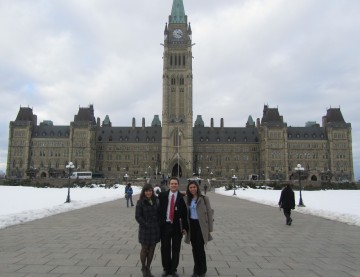In early February, I had the opportunity to represent UBC Medical Students at the annual CFMS Federal Lobby Day in Ottawa. Every year, medical students from Vancouver to St. John’s identify an issue that is pertinent to the quality of health care in Canada and gather on Parliament Hill to work with the Federal Government towards achieving this common goal.
This year’s Lobby Day focused on fostering a physician workforce that serves the needs of Canadians by proposing two specific strategies to improve access to care in rural and remote regions of Canada.
In the 2011 Federal budget, the Federal Government committed to forgiving a fraction of the Federal Student Loan for new rural physicians. However, many students will consolidate all loans into a low interest Line of Credit prior to completing residency. Therefore, our first suggested strategy to attract young physicians to rural practice was to defer repayment of Federal Student Loans until the completion of residency training, thus enhancing incentive to take part in the loan forgiveness program.
Secondly, recognizing that students from rural backgrounds are more likely to practice rural family medicine but are underrepresented in medical school, the CFMS asked Health Canada to take national leadership by establishing mentorship programs that recruit candidates from rural and remote communities. These programs would reduce perceived as well as recognized barriers to medical school admission.
Collectively, our group of future physicians met with 93 Members of Parliament and Senators to discuss proposed courses of action. Our proposition was received with enthusiasm and Motion M-289 was introduced in Parliament as a direct result of our lobbying efforts. However, we recognize that significant change is difficult to implement with a single day of lobbying. We will continue our efforts through engagement of local politicians in the hopes of creating sustainable solutions to the physician distribution incongruity that currently exists in Canada.
